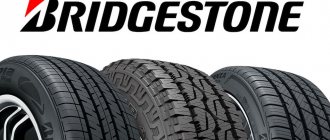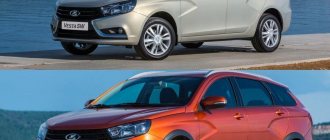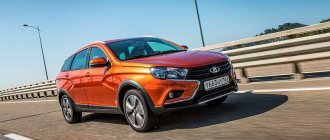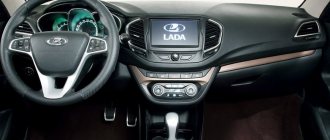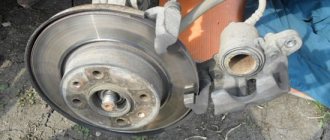The success of the Lada Vesta in the market as a whole, and especially in comparison with previous AvtoVAZ models, could not but receive its logical continuation. In 2021, in the fall, Lada Vesta SW and Lada Vesta SW Cross went on sale. Vesta has already managed to make a name for itself, so there was a sense of excitement over the new products, and the start of sales was successful, however, when comparing the SW cross and the regular LadaVesta station wagon, it is not immediately clear why these are different cars at all? In fact, Lada Vesta and Lada Vesta Cross have differences in many parameters, we will try to highlight the main ones.
Comparison of bodies and wheelbases
Cars from the new AvtoVAZ model line both have decent dimensions, but there are still differences between the Lada Vesta SW Cross and its sister: So, the Cross is 20 mm higher: 1532 mm versus 1512, 21 mm wider: 1785 mm and 1764 mm, longer by 14 mm: 4424 mm and 4410 mm, Vesta SW cross has a 14 mm larger track. The wheelbase of the cars is the same, but the wheels themselves are different. Drivers of a regular Lada SW will have to be content with 15 and 16-inch wheels; the SW cross has 17-inch wheels. In general, Cross is larger in all respects.
Model design
The first glance at a book is always at its cover; you don’t judge the book by it, but you can judge the owner of the car with almost 100% confidence by its design. In their new models, VAZ maintains style. Still the same bias towards sports, which is not surprising, because SW stands for “SportWagon”, all the same stylish X-shaped patterns. But AvtoVAZ nevertheless made a difference between the Lada Vesta SW and the Lada Vesta SW Cross. In terms of body design, we are more impressed by the Vesta Cross, firstly, the color of the Lada Vesta SV Cross is “Mars”, in other words, metallic orange. But more significant is the black plastic body kit; this part protects the most vulnerable spot of the car from scratches, and subsequently, from rotting. A decorative exhaust tip makes the car more sporty and aggressive, while the regular Lada Vesta SW does not look so menacing and daring. Looking at the Vesta SW Cross, you can immediately see that it is for off-road use, which is not too different from what we call roads; its driver is a lover of active recreation in almost extreme places with his family or a group of friends. While the driver of the Vesta SW is also no stranger, but instead of off-road, he relies on any road, but the road, and his passion is not conquering hard-to-reach areas, but active recreation in the country and, of course, barbecues.
To whom and in what cases are these models suitable?
Lada Vesta is a car ideal for both the city and travel. Many drivers noted the ease of driving over long distances. The large trunk allows you to take quite a lot of things with you. The car will also please those who want a new, modern car, but do not have a large budget. The inexpensive entry-level package contains all the necessary options for safety and comfort.
When choosing a Lada Vesta Cross, the buyer must clearly understand for what purpose he is choosing this car. There is no point in buying a car just for its looks. If the car will be used in normal urban conditions, then it is better to choose a regular sedan. In this case, the buyer receives savings on fuel consumption and does not overpay for a plastic body kit.
An off-road vehicle must operate in difficult conditions. Dirt roads, forest roads, overcoming small winter snowdrifts, hunting and fishing trips - that’s what such a car is needed for. In this case, the high ground clearance will show itself in all its glory, and the plastic protection will protect the body from damage.
Auto and motorcycleComment
Chassis and ground clearance
Ground clearance is an important detail for a car that is going to drive off-road; this is exactly what distinguishes the Vesta Cross station wagon from a regular SW. The next extremely important part of station wagons is the suspension. It is clear that new models should have good suspensions, this is indeed the case, the handling and smooth running of the cars are at a high level in comparison even with foreign cars, let alone previous VAZ models. But the features of the SW Cross consist of more advanced shock absorbers and springs, and added suspension settings make the car stiffer and more confident than its city brother.
Transmission
Vesta Cross, in addition to the usual “mechanics”, has a robotic transmission. It can provide the motorist with improved driving conditions. Depending on driving conditions, fuel emissions can be adjusted, which provides savings for the driver and improves environmental performance. Currently, this type of gearbox is used by most companies and is used on cars of different classes.
It is necessary to take a more detailed look at the issue of a robotic gearbox and understand the principle of its operation. It is a continuation of the mechanical one that everyone is so accustomed to. The change is that gear shifting is controlled by an electronic unit. The box has a wide variety of designs, but they all have common elements:
- ECU;
- manual transmission;
- Multi-disc clutch;
- SPP and coupling.
Its most significant disadvantage is the difficulty of repair and high cost.
Next, we will talk about robotic gearboxes and manual gearboxes, their advantages and disadvantages separately.
Manual Transmission
Switching between stages is manual when using such a gearbox. This means that the person decides which gear ratio should work.
The advantages of manual transmission are:
- Relatively simple structure;
- Low price;
- Does not require special cooling conditions;
- High efficiency;
- Light weight;
- Shows its best side during extreme driving;
- The car starts with the help of a tug;
- Durability and wear resistance, reliability;
- Shift clarity.
- Driving skills required;
- Inability to gradually and smoothly switch gear ratios;
- Greater energy consumption for the driver than when driving a vehicle with automatic transmission;
- The service life of the clutch assembly depends on the driver's driving level.
Robotic gearbox
A robotic gearbox (“robot” in common parlance) is the same “mechanics”, but with automated gear shifting and clutch release. With this function, only input information is required from the driver, and the gearbox operates using an electronic unit.
Positive aspects of manual transmission:
- It is as convenient to use as an automatic machine;
- Fuel economy;
- Relatively reliable;
- Cheap compared to an automatic transmission.
But, any mechanism also has its drawbacks. They are presented below:
- Slowness in switching;
- Possible jerks when moving;
- Small clutch resource;
We can say that there are not so many shortcomings, but they can also bring serious inconvenience, for example, in a traffic jam, Vesta SV Cross can behave unpredictably, according to reviews of many drivers. And using such a car for off-road driving is not the best idea.
Salon
The first thing that catches your eye is that the Lada Vesta SW Cross has other colors of seats and inserts, namely, echoing the standard color of the car - “Mars”, that is, they are bright orange, making the car quite lively inside. But besides the color and “cross” inscriptions, the interior of the models is absolutely the same, but this does not mean that there is nothing to say about it. Adjusting the front seats allows you to find a truly comfortable position in the car, a comfortable armrest with a large volume for your items, convenient instruments from which the readings can be clearly read, curly inserts in the cabin continue the external design, you won’t forget that you are behind a Vesta. The back seat is simply wonderful: there is enough room for even three, there is more than enough legroom, high ceilings will be especially appreciated by all 180+ cm passengers, chargers, bags on the backs of the front seats, and most importantly - an armrest in the rear seat with cup holders, which generally makes us doubt whether we are sitting in a VAZ car?
Breakthrough or failure? Test drive of Lada Vesta SW and SW Cross station wagons
Station wagons in Russia are a risky thing, but new station wagons are doomed to success. What worries Steve Mattin, why the long-awaited station wagon is not only more beautiful, but also more exciting than a sedan, how a car drives with a new 1.8 liter engine and why the Vesta SW is one of the best trunks on the market.
Steve Mattin never leaves his camera. Even now, when we are standing on the site of the high-rise amusement park SkyPark and looking at a couple of daredevils preparing to jump into the abyss on the largest swing in the world. Steve points the camera, a click is heard, the cables disengage, the couple flies down, and the head of the VAZ design center receives several more bright emotional shots for his collection.
{loadposition adsense1}
“Don’t you want to try it too?” - I egg Mattin on. “I can’t,” he replies. “I recently injured my arm, and now I need to avoid physical activity.” Hand? Designer? A movie scene appears in my head: AvtoVAZ shares are losing price, there is panic on the stock exchange, brokers are tearing their hair out.
It is impossible to exaggerate the value of the work of Mattin’s team for the plant - it was he and his colleagues who created an image that it is not a shame to bring to the top of the market for a reason other than the ultra-low price. Whatever one may say, the technical component for Tolyatti cars is a little secondary - the market accepted the expensive Vesta because it really liked it, and primarily because it is good and original in appearance. And partly also because it’s our own, and in Russia it still works.
{loadposition direct1}
But our station wagon is a risky thing. There is a need for them, but there is no culture of using such machines in Russia. Only a truly outstanding car that can declare its rejection of the image of a utilitarian “barn” can break the old trend. Mattin’s team turned out exactly like this: not quite a station wagon, not at all a hatchback and certainly not a sedan. VAZ's SW stands for Sport Wagon, and this is, if you like, an inexpensive domestic Shooting Brake. Moreover, in our conditions, the design of the SW Cross with a protective body kit, contrasting coloring and a ground clearance of such magnitude that most compact crossovers would envy is more in line with the sporty-utilitarian style in our conditions.
{loadposition adsense2}
The new bright orange color scheme, which was developed specifically for the Cross version, is called “Mars”, and standard station wagons are not painted in it. The non-contested 17-inch wheels also have their own special style, as does the double exhaust pipe. A black plastic body kit around the perimeter covers the bottom of the bumpers, wheel arches, sills and lower parts of the doors. But the main thing is ground clearance: the Cross has an impressive 203 mm under the bottom versus the already considerable 178 mm for Vesta sedans and station wagons. And it’s good that the marketers insisted on rear disc brakes, although they didn’t make much sense. Behind the big beautiful discs, the drums would look somewhat archaic.
Compared to the Cross version, the standard Vesta SW looks rustic, and this is normal - it is Cross that should finally explain to the consumer that a station wagon is cool. But the pure station wagon is a work of art in itself. If only because it was made with soul and without special expenses. The gray “Carthage” suits this body perfectly - the result is a discreet and interesting image. The station wagon has a minimum of original body parts, and the base is completely unified. So much so that it has the same length as the sedan, and the taillights at the plant in Izhevsk are taken from the same box. The floor and trunk opening have not changed, although in some places the body of the five-door had to be slightly strengthened due to the lack of a rigid luggage compartment panel. For the station wagon, the plant mastered 33 new dies, and as a result, the rigidity of the body was not affected.
{loadposition direct2}
The station wagon has a higher roof, but this is hardly noticeable. And it's not just the bevel of the rear window. The cunning Mattin deftly lowered the roof line down just behind the rear doors, at the same time visually tearing it away from the body with a black insert. Stylists called the visible piece of the rear pillar a shark fin, and it came from the concept to the production car unchanged. Vesta SW, especially in the Cross version, generally differs little from the concept, and VAZ stylists and designers can only be applauded for such determination.
It’s also nice that in Tolyatti they weren’t afraid to paint the interior the same way. A combined two-tone finish is available for the Cross, not only in body color, but also in any other color. In addition to colored overlays and bright stitching, cute overlays with a three-dimensional pattern have appeared in the cabin, and VAZ offers a choice of several options. The instruments are designed to match the interior trim, and their lighting now always works when the ignition is turned on.
The rear passengers will be the first to feel the benefit of the higher roof. Not only did Vesta initially make it possible for a driver 180 cm tall to sit comfortably behind him, but taller customers won’t have to bend down in the back of the station wagon, although we’re talking about a modest additional 25 millimeters. There is now an armrest in the back of the rear sofa, and on the back of the front armrest box (also new) there are buttons for heating the rear seats and a powerful USB port for charging the gadget - solutions that will later migrate to the sedan.
The station wagon generally brought a lot of useful things to the family. For example, an organizer, a pile finish and a microlift for the glove box - a compartment that previously simply fell rudely onto your knees. The rear view camera of the proprietary media system can now rotate parking markings following the rotation of the steering wheel. A fin with a full set of antennas appeared on the roof, the hood seal was changed, and the gas filler flap now had a spring mechanism and central locking. The sounds of the turn signals have become nobler. Finally, it was the station wagon that was the first to receive a familiar and understandable trunk opening button on the fifth door, even if instead of the saloon one.
The compartment behind the trunk door is not at all record-breaking - according to official data, from the floor to the sliding curtain the same 480 VDA-liters as in the sedan. And even those can only be counted taking into account all the additional compartments and niches. But even in Tolyatti they stopped measuring trunks with conventional sacks of potatoes and refrigerators - instead of a huge hold, Vesta offers a well-organized space and a set of branded accessories, for which you want to pay extra right in the dealer’s showroom.
Half a dozen hooks, two lamps and a 12-volt socket, as well as a lockable niche in the right wheel arch, an organizer with a shelf for small items, a mesh and a niche for a washer bottle with a Velcro strap in the left. There are eight attachment points for luggage nets, and there are two nets themselves: a floor one and a vertical one behind the seat backs. Finally, there is a two-level floor.
On the top floor there are two removable panels, under which there are two foam organizers - all interchangeable. Below is another raised floor, under which there is a full-size spare tire and - surprise - another spacious organizer. All 480 liters of volume are cut, plated and served in the best possible way. The seat backs fold in sections according to the standard pattern, flush with the upper false floor, although at a slight angle. At the limit, the trunk holds a little more than 1350 liters, and it’s hard to imagine the notorious bags of potatoes here. We are more likely talking about skis, bicycles and other sports equipment.
VAZ workers claim that there was no need to seriously redesign the station wagon chassis. Due to the redistribution of weight, the characteristics of the rear suspension have changed slightly (the rear springs of the station wagon have been increased by 9 mm), but this is not felt while driving. Vesta is recognizable: a dense, slightly synthetic steering wheel, insensitive at small turning angles, modest rolls and understandable reactions, thanks to which you want and can drive the car along the Sochi serpentines. But the new 1.8 liter engine on these tractors is not very impressive. Vesta goes up strained, requiring a lower gear, or even two, and it’s good that the gearbox switching mechanisms work very well.
The VAZ team never finished up their gearbox - the Vesta still has a French five-speed manual transmission and a well-functioning clutch. In terms of ease of starting and shifting gears, the unit with a 1.8 liter engine is superior to the base one, if only because everything here is vibration-free and works more clearly. The gear ratios are also well chosen. The first two gears are well suited for city traffic, while the higher gears are good for highway driving and are economical. Vesta 1.8 drives confidently and accelerates well in the mid-speed zone, but is not distinguished by either powerful traction at the bottom or cheerful spin at high speeds.
The main surprise is that the bright Vesta SW Cross drives more juicily, even losing some symbolic fractions of a second in dynamics to the standard station wagon. The thing is that it actually has a different suspension setup. The result is a very European version - more elastic, but with a good feeling of the car and an unexpectedly more responsive steering wheel. And if the standard station wagon handles unevenness and bumps, albeit noticeably, but without crossing the line of comfort, then the Cross’s setup is clearly more asphalt. You want to take turns on the Sochi serpentines on it again and again.
This does not mean at all that a station wagon with 20 cm of ground clearance has nothing to do on a dirt road. On the contrary, the Cross jumps over rocks without any suspension breakdowns, except perhaps shaking passengers a little more. And without difficulty it jumps along steeper bends than those where locals still drive in their cars, without being caught by its plastic body kit. The standard SW is a little more comfortable in these conditions, but requires a slightly more careful choice of trajectory - you don’t really want to scratch the beautiful X-face on the rocks.
Low-profile 17-inch wheels are a privilege exclusively for the Cross version, while the standard Vesta SW has 15 or 16-inch wheels. As well as rear disc brakes (standard station wagons only have them with the 1.8 engine). Basic Vesta SW kit for RUB 639,900. corresponds to the Comfort package, which already has a very decent set of equipment. But it’s worth paying extra for the Luxe version, if only for the sake of a double trunk floor and a full-fledged air conditioning system, which the sedan once so lacked. A navigator with a rear view camera will appear in the Multimedia package, which costs at least 726,900 rubles. The 1.8 liter engine adds another 35,000 rubles to the price.
The SW Cross all-terrain station wagon is offered in the Luxe version by default, and this is a minimum of 755,900 rubles. A car with a 1.8 liter engine with the maximum set, which includes a heated windshield and rear seats, a navigator, a rear view camera and even LED interior lighting, costs 822,900 rubles, and this is not the limit, because the range also includes "robot". But with it, the car seems to lose a little of its driving excitement, and therefore we are just keeping such versions in mind for now.
Steve Mattin flies back to Moscow on an ordinary "economy" plane and has fun editing his own photographs. Tilts the horizon, changes the color of the sky, and turns the color and brightness sliders. In the center of the frame is the Vesta SW Cross in “Mars” color, obviously the brightest product of the Lada brand. Even he was not tired of her appearance. And now it’s clear that everything is fine with his hands.
Source: autonews.ru
Stay up to date with AUTO news - subscribe to the channel in Yandex.Zen
Engine performance and fuel consumption
The difference between Cross and just Vesta SW in engines and gearboxes lies only in the difference in their combinations. So, a regular station wagon has 16 valve engines of 1.8 and 1.6 liters with 122 and 106 horsepower, respectively. As well as manual and “robot” gearboxes on each of these engines. Vesta SW Cross does not have a “robot” on the 1.6 liter engine. The fuel consumption of a 1.6 liter engine per 100 km is from 7 to 7.3 liters, but the 1.8 liter engine is from 7.6 to 7.8. In general, reviews about the greater technical perfection and convenience of the 1.6 liter engine can be called close to the truth, so you should think twice before than to pay more money for additional volume.
Lada Vesta Cross
There is no point in talking a lot about this car after what has been said about a regular sedan, since these models are almost identical . However, this version is positioned as an all-terrain model . All the main changes affected the suspension, and therefore some technical characteristics have changed.
Let's list the main changes:
- Ground clearance increased to 203 mm.
- A plastic body kit has been added around the perimeter of the body.
- The car is installed on 17-inch wheels.
- Average fuel consumption is from 7.1 to 7.7 liters per 100 km, depending on the configuration.
- Added to the color scheme.
The disadvantages of Vesta Cross are similar to those of a regular sedan. We can only add that the car is presented only in trim levels from “Luxe” to Luxe Prestige.” And the price starts from 773,900 rubles. Therefore, thrifty buyers will not be able to buy this model cheaply.
Trunk
Fans of active recreation, family trips to the country, simply those who need to transport large volumes - that’s who are looking at station wagons, and the trunk is something that can radically change the decision of a potential buyer. First, we need to note the general things, namely: the double bottom, which noticeably increases the trunk space, AvtoVAZ’s elimination of the shabby folding second shelf in favor of a curtain, the presence of convenient pockets, nets, hooks, and compartments for all transportation options. And of course, general disadvantages: if you want to increase the volume of the already large trunk due to the rear seats, then you will be disappointed, they form a flat surface only with a false bottom, removing it, you will have to store things with a step. The second disadvantage is the high threshold, even with a false bottom; without it, it grows even more, becoming a decent obstacle for especially heavy things. Now let's move on to the differences.
Lada Vesta SW Cross comparison with Lada Vesta SW. The Cross station wagon has an external trunk release button! The designers focused on this part of the car and both Vesta SW are equipped with excellent trunks of 480 liters with a false floor, 575 without it and 875 liters with folded seats. AvtoVAZ gave the SW cars wonderful, spacious trunks in which you can fit any bags, thanks to the large volumes, and fragile things, securing them in additional compartments. The trunk is really not just big, but well-thought-out; for once, a convenient second shelf is an excellent opportunity to avoid putting bags on top of bags, risking damage to the contents. And the folded rear seats form a plane 170 cm long, which means that not only skis, but also a very tired traveler will fit there.
Three-volume body
Lovers of sedans, of which we have a surprising number, explain their choice by the fact that in a car with a trunk separated from the passenger compartment, it is quieter, warmer and there are no foreign odors coming from the trunk. Each of these statements can be argued. But we can agree. The trunk volume of this sedan is the same as that of the station wagon (under the shelf) - 480 liters, and the rear seat back also folds in parts.
The volume of the luggage compartment is 480 liters. One “but”: when loading under the lid, you will have to take into account the hinges protruding into the trunk and place things so as not to crush them.
The sedan is also lighter than the station wagon (by 50 kg). And the body is stiffer. This entails better handling. Most likely, the interior will begin to creak later than in the station wagon. However, particularly large items (for example, a packaged washing machine or a kitchen stove) cannot be transported in a sedan. But in a station wagon you can at least try. But this is so, a remark.
Price difference
Although both cars are station wagons, there are differences in price, and justified ones, so, when we compare the Lada Vesta SW Cross with a more urban version, we find a lot of differences in favor of the first, which, of course, affected the cost.
The base price of Vesta SW is 589,410 rubles, Vesta SW cross is 693,810 rubles. The difference is almost 100,000, for this the unique cross will have: a plastic body kit, “Mars” color, interior trim of the same color, a decorative exhaust pipe nozzle, wider ground clearance, a more advanced suspension and larger wheels, at least an inch. Is it worth 100,000 rubles? You decide. We will just note that in all Vesta AvtoVAZ paid great attention to safety, did not skimp on it, 4 airbags are already included in the most modest configuration, such concern for customers is very pleasant.
Main Differences
The changes made to the Vesta Cross affected some dynamic and driving characteristics that differed from the usual sedan.
- Increased ground clearance made it possible to use the car in more difficult road conditions. When moving along country and forest roads, you don’t have to be afraid of large bumps, stones, and passes. On a regular sedan you need to be more careful.
- 17-inch wheels affected fuel consumption . Compared to a simple Vesta, on Cross it is slightly higher.
- Appearance . The plastic body kit and signature Mars orange color add to the appeal. The car looks bolder, more aggressive.
- Offered configurations . Vesta Cross is presented in only six expensive “Luxe” trim levels, while a regular sedan offers twenty-two - from the minimum “Classic” to the maximum “Exclusive”.
Transmission
The gearbox in the new Vesta SW is of two types: “robot” and mechanical, and in the crossover with a 1.6 liter engine there will be no “robot”. Let's start with the mechanics. Here we must pay tribute, the reworking of the gears of old models and foreign parts did their job, changing gears is easy and pleasant. But what about the "robot"? Is it really so good that they don’t even put it on a smaller cross-country engine in order to provoke the purchase of a larger one? Rather, on the contrary, the VAZ robot is very far from ideal, it sucks all the pleasure that a manual transmission can provide, our condolences to all those who don’t like it, of course, this is not a detail that should scare you away from the car, but Vest’s mechanics are really nice .
